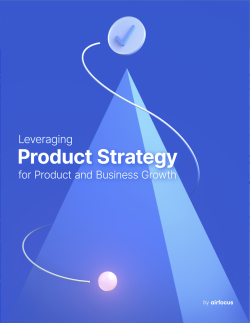Go-To-Market Strategy
What is a Go-To-Market Strategy?
Definition of a Go-To-Market Strategy
A Go-To-Market Strategy is essentially a plan of how a company is going to release a product after it has been developed and how it will be sold and promoted within the marketplace. The strategy is one that uses the internal and external resources of a business, advertises the overarching value of the product, and attempts to gain a competitive advantage in the market over its competitors.
The Go-To-Market Strategy should specifically set the exclusive value proposition of the product, or rather, convey the value that the product is going to give to the consumer. The strategy should take into account everything that falls within three chief branches of the business concern: the customer, the business, and the competition.
Components of a Go-To-Market Strategy
There are a variety of aspects that should be taken into account when conducting a Go-To-Market Strategy.
The pricing point or points of the product are key and the market needs to be assessed to gain an understanding of how to pitch the cost of the product vs its value.
Also, the distribution and channels of sale of the product need consideration alongside the tactics for marketing the product and devising any campaigns, while taking into account the budget needed to achieve them.
Perhaps too, there will be a need to train staff to support consumer use of the product as well as to sell it.
If there turns out to be an acute demand for the product or the product performs unexpectedly well in the marketplace, due consideration might also go to the recruitment of new staff members to fill product support roles.
Responsibility for the Go-To-Market Strategy
Responsibility for a company’s Go-To-Market Strategy lies across multiple sectors of the business.
However, it is significant that the tactics used in the launch of a product - such as the generation of leads, advertising the brand, promotion campaigns, public relations, and interacting with customers - are functions of the marketing department.
As a consequence, it is they who will drive the strategy forward, and provide key guidance to the rest of the business. In particular, the Product Management team is instrumental to the product’s fate, and so would be expected to work closely with any marketing campaigns and the like.
A triangle of factors
When deliberating on the components of a Go-To-Market Strategy, it is important to bear in mind three factors; the consumer, the business itself, and the competition within the marketplace.
The consumer
Creating a product that fits the consumer as well as it can is desirable not just because it will motivate them to buy the product, but can also capture their loyalty for successive product launches.
Effectively achieving this can help to ensure the future of the business. Impressing and capturing consumer loyalty can also be a means of cost-effective marketing. A happy and loyal consumer is likely to recommend the product and expand the customer base.
When considering the consumer, or the customer, the Go-To-Market Strategy will sometimes also include a concept called Market Segmentation.
This is a practice of dividing consumers into different groups depending on their needs. In doing this a business might then be able to predict a common response to an action by a group of consumers.
There are a number of things to consider in segmenting the consumer market: the industry in which the consumer resides; the potential buying power of the consumer; how the customer behaves in the marketplace - for example, whether or not a competitor has, or can gain their attention; the location of the consumer; exactly how the consumer will use the product; how the consumer will benefit from the product; what information needs to be imparted by the company to the consumer; the times and locations in which the consumer might use the product; and how profitable it is to sell the product to each type of consumer.
The business
The vision of the organization is important in motivating the workforce. So incorporating the ideals of the organization early on in the Go-To-Market Strategy can raise the performance of staff, which in turn will have an impact on the success of the product.
The competition
Knowing the competition, either already in the marketplace, or still in development, can have a huge influence on the nature of the business’ final product, and therefore the strategy to send it into the marketplace.
Competition already in the market can provide a business with intelligence on how consumers are reacting to similar products or what attitude consumers have to the array of products already on the market that is similar.
Furthermore, having information about up-and-coming products of competitors can incentivize a business to speed up its product distribution and marketing campaigns. A business might also ultimately learn where new opportunities lie.
Why Use a Go-To-Market Strategy?
Using this strategy not only enables the user - typically a Product Manager or a Marketing Manager - to identify actions that lead to positive outcomes such as where to distribute the product, how, and perhaps how quickly, but also aids in determining obstructing factors of the entry of the product to the market. This might be sudden, new, and unforeseen competition for the product, an unanticipated shift in the attitude or the behavior of the consumer, public relations issues within marketing campaigns, or even complications with product sales channels.
Having a strategy like this gives all the people involved in the release, dissemination, and sale of the product, a conceptual schematic to repeatedly refer to. A product release may be complicated, and depending on the planned saturation of the product, it might involve large numbers of different people in a variety of roles.
It is worth considering the fact that the release is the outward-facing side of the organization. Poor performance or deficient strategies concerning the product’s entry into the market can profoundly and more widely affect the reputation of the business.
What is a go-to-market strategy vs. marketing strategy?
While these two terms may sound similar and are sometimes used interchangeably by marketers, they are different.
Marketing strategy
A marketing strategy is the entire marketing plan for the whole business. That covers everything from initial ideas to channels and every action in between. A marketing strategy helps with building the brand, raising awareness, and increasing income. The marketing team is tasked with trying to retain a competitive advantage as well as keeping on top of any trends in the industry.
Go-to-market strategy
A go-to-market (GTM) strategy is more specific and short-term. This focuses on one product and the entire product development process, from ideation to launching on the market. It still covers everything that a general marketing strategy would do but is specific to one launch. This could mean researching one buyer persona and targeted marketing on a particular marketing channel.
How do I build a GTM strategy?
While every GTM strategy will look slightly different, they all share a basic structure. Here are nine steps to follow to build a successful GTM strategy.
Identify a problem
You can have the best product idea in the world, but it won't be a success if it’s not solving a customer’s problem. That’s why identifying a gap in the market or having a USP is vital. Don’t make a product you think people will want. Make sure it’s what they value. The potential audience must be there.
Find your target audience
You will need to learn about your ideal customer to make the most profit. Setting up a buyer persona doesn’t necessarily guarantee success, but it does give you an idea of who you need to target your product towards. Then build a character of who will be purchasing your product.
Do a SWOT analysis
SWOT analysis is a popular tool because it makes a business think outside the box. By researching your internal strengths and weaknesses as well as external opportunities and threats (competitive analysis), you get an overall picture of whether or not your product will succeed.
Nail down key messaging
What exactly do you want your customer to feel about your product? Set up a value matrix to help you evaluate every buyer persona and why they will need your product. These key messages should appear in every piece of content marketing you produce.
Map out the buyer journey
Again, you may have multiple buyer journeys, so select your core handful. The three stages of the marketing funnel are awareness, consideration, and decision. Determining how you’ll guide buyers through these different stages will help you perfect your go-to-market strategy and messaging.
Choose marketing channels
While you might want to promote your product on every channel, that can take a lot of money and time. Consider your target audience and where they spend most of their time online. Targeting Gen Z? It could be worth targeting your marketing towards TikTok. Trying to reach baby boomers? Working on SEO and email marketing might be more worth your time.
Set up sales plan
Choose a sales strategy that works best for your product and company. Will customers require nurturing throughout the product journey? Could you partner with another brand to cross-promote or sell in their physical stores? The main aim is to turn potential customers into purchasers.
Establish goals
Having a plan is great, but you should also have goals in place to monitor. Set up specific, measurable, attainable, relevant, and time-bound goals (aka SMART goals) to help you track how your go-to-market plan is working. Use KPIs for quantitative measurements during the launch. And use OKRs, which combine the concept of SMART goals and KPIs to help you quantitatively measure performance.
Share processes
The final step is implementing your GTM strategy. You need to outline your project management processes, goal tracking, templates, and structures. The idea is that every team member should know what is expected, as should someone new coming in — the better the communication, the smoother the product launch.

General FAQ

Glossary categories
Create effective product strategy

Experience the new way of doing product management








